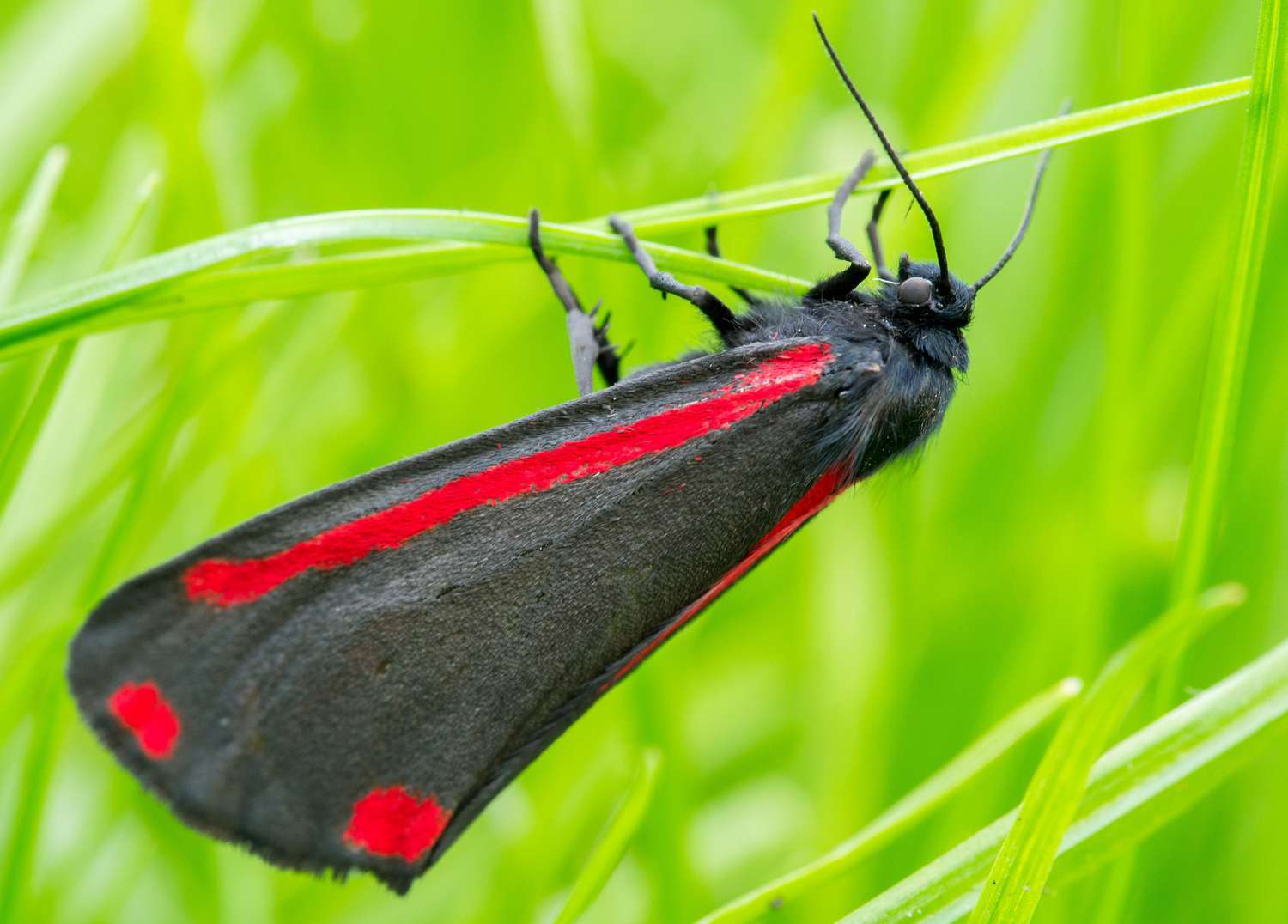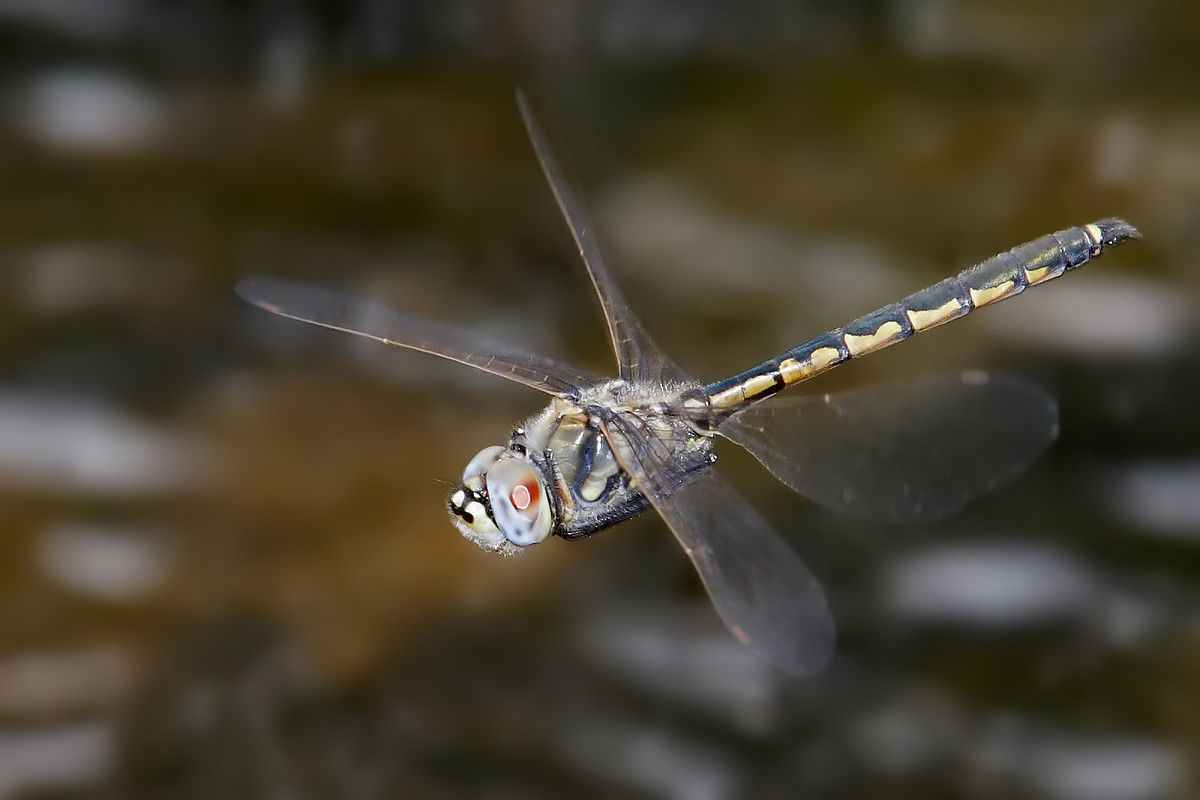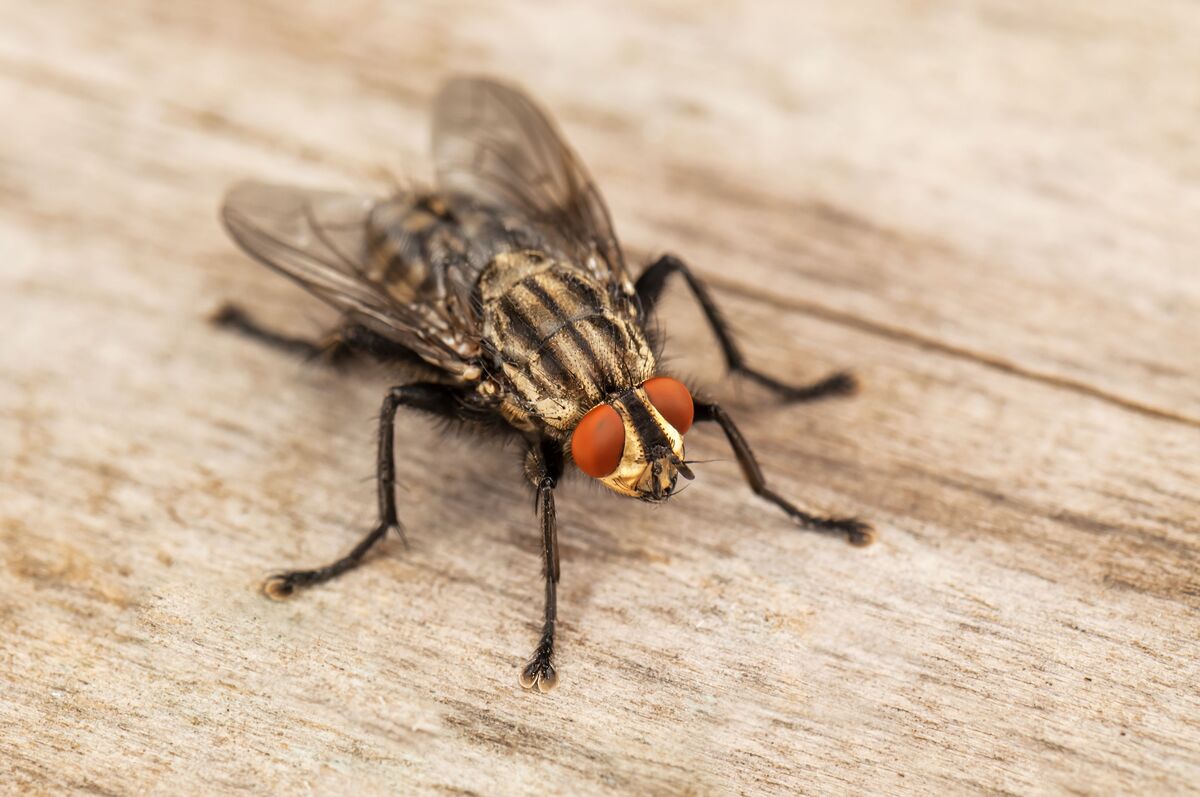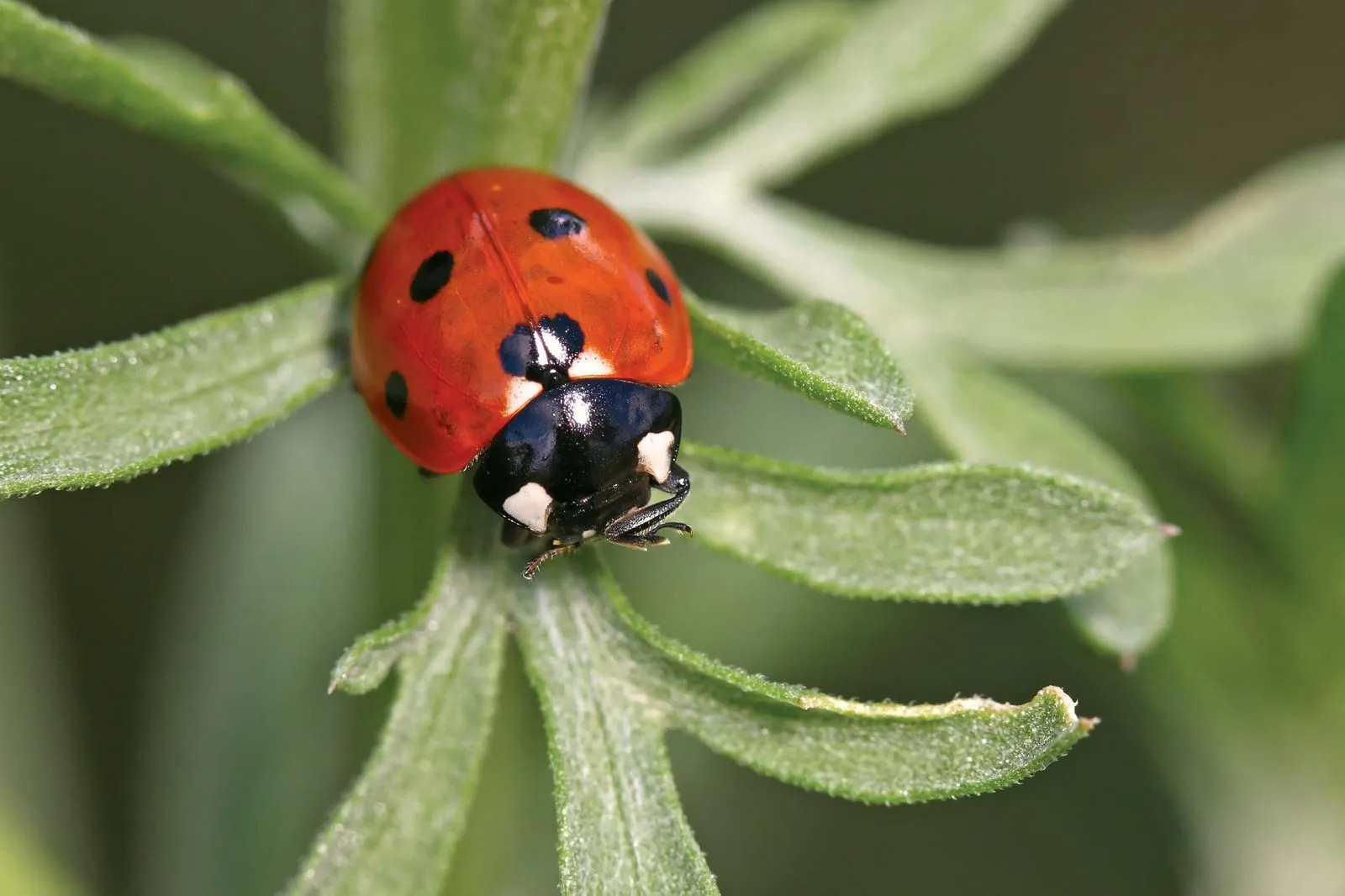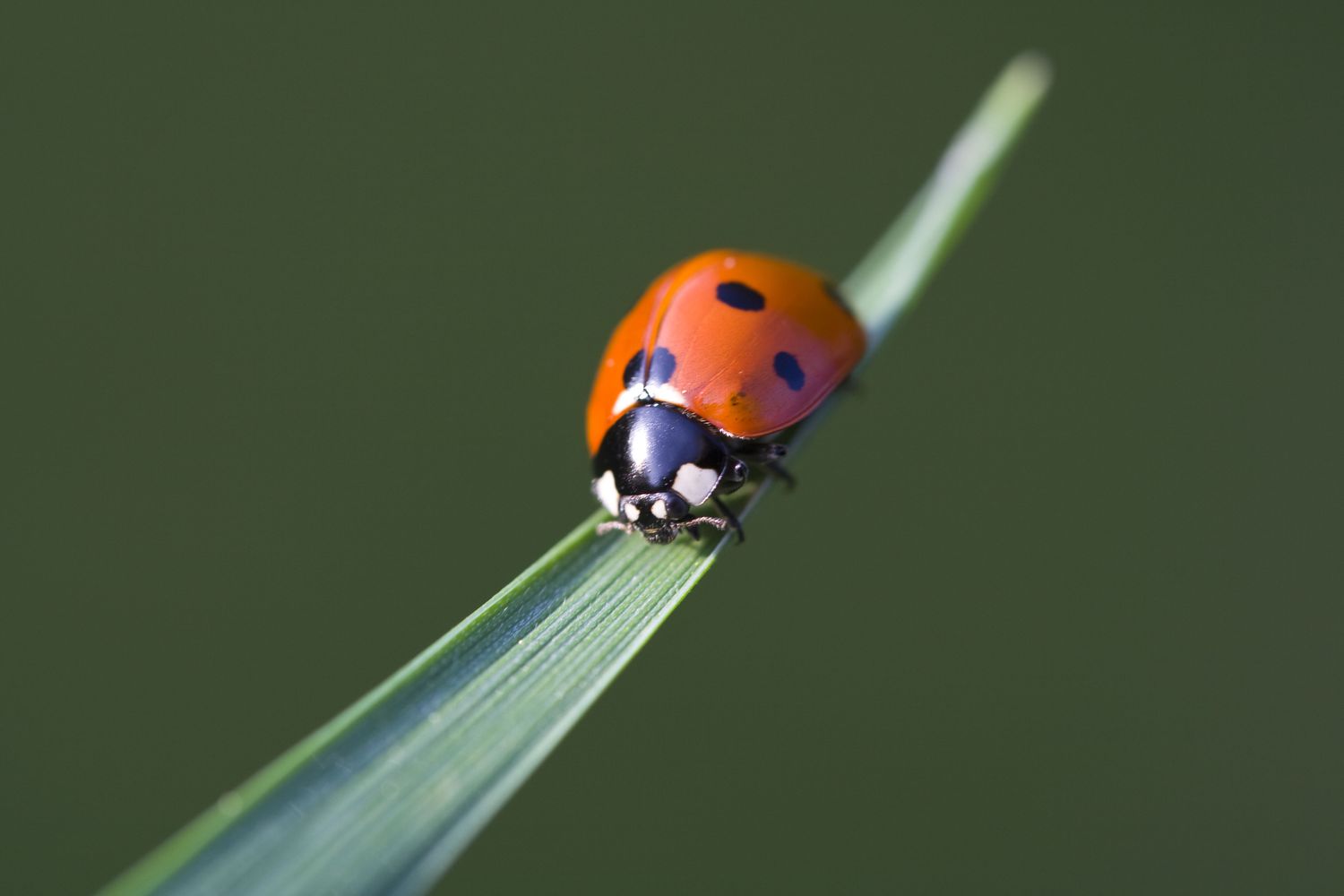Home>Gardening News and Trends>Latest News>What Insects Molt
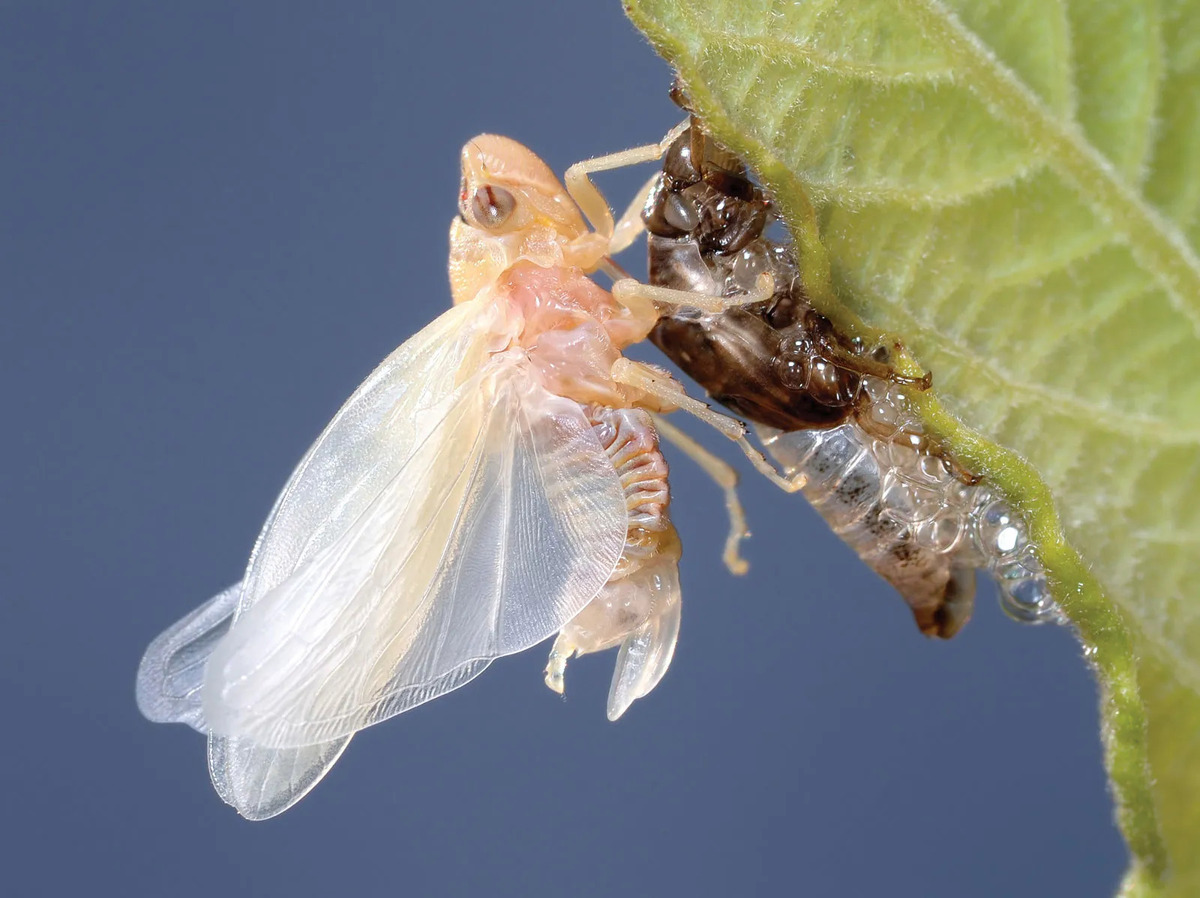

Latest News
What Insects Molt
Modified: January 22, 2024
Stay up to date with the latest news on insects molting. Discover fascinating insights and new discoveries in the world of insect biology.
(Many of the links in this article redirect to a specific reviewed product. Your purchase of these products through affiliate links helps to generate commission for Chicagolandgardening.com, at no extra cost. Learn more)
Table of Contents
Introduction
In the fascinating world of insects, molting is a natural and essential process that plays a vital role in their growth and development. But what exactly does it mean for insects to molt? In this article, we will explore the concept of molting in insects, understanding why they undergo this transformative process, and the stages involved.
Molting is a term commonly used to describe the shedding or shedding of the outer layer or exoskeleton of insects. It is a necessary process for these creatures to accommodate growth and enable them to adapt to their changing environment. From small larvae to fully grown adults, insects undergo multiple molting stages throughout their lifecycle.
Why is molting such a crucial event for insects? The primary reason is that their exoskeleton, the rigid outer covering made of chitin, imposes limitations on their growth. Unlike animals with internal skeletons, insects cannot increase in size without periodically shedding their exoskeleton and replacing it with a larger one.
The molting process involves a series of intricate stages guided by hormonal control. It begins when an insect reaches a certain size or maturity and triggers the release of molting hormones. These hormones initiate the breakdown of the existing exoskeleton and the production of a new, larger exoskeleton beneath it.
Definition of Molting
Molting, also known as ecdysis, refers to the process by which insects shed their outer layer or exoskeleton to facilitate growth and development. It is a natural and cyclical event that occurs throughout an insect’s life, from its early stages as a larva to its final form as an adult.
The exoskeleton, composed primarily of chitin, serves as a protective armor for insects, providing structural support and defense against the external environment. However, as insects grow, their exoskeleton becomes constricting, limiting their ability to expand. To overcome this constraint, they must undergo molting.
During molting, a sequence of physiological and behavioral changes takes place. The process begins with the release of molting hormones, which stimulate the molting glands to secrete enzymes that initiate the breakdown of the old exoskeleton. As the old exoskeleton loosens, the insect begins to separate its body from it.
Once separated, the insect enters a vulnerable stage called the ‘pre-molting’ phase. During this phase, the new exoskeleton, which has been growing underneath the old one, begins to harden. The hardening process involves the deposition of layers of chitin, providing a durable and protective outer covering for the insect’s body.
After the new exoskeleton has fully hardened, the insect enters the ‘post-molting’ phase, during which it expands its body by taking in fluids or air to stretch the newly formed exoskeleton. Through this expansion, the insect gains the necessary space to accommodate its increased size.
It is important to note that molting is not a one-time event but a recurring process. Insects undergo multiple molts throughout their lifecycle, with the frequency and timing varying depending on the species. Each molt represents a significant milestone in an insect’s growth and development, bringing it one step closer to reaching adulthood.
Why Insects Molt
Molting is a critical process for insects, serving several important purposes in their lifecycle and overall survival. Let’s explore the reasons why insects undergo molting:
Growth and Size Limitations: One of the primary reasons why insects molt is to accommodate their growth. The exoskeleton of insects is rigid and does not allow for expansion. As insects mature and increase in size, the exoskeleton becomes too small and restrictive, hindering further development. Molting enables insects to shed their old exoskeleton and replace it with a larger one, providing the necessary space for growth.
Repair and Regeneration: Molting also plays a crucial role in the repair and regeneration of damaged or worn-out body parts. If an insect sustains an injury or loses a limb, molting allows it to regenerate the lost body part during the post-molting phase. This regenerative ability helps insects adapt and recover from various physical challenges they may encounter in their environment.
Metamorphosis: Many insects undergo complete metamorphosis, transitioning through distinct developmental stages during their lifecycle, such as eggs, larvae, pupae, and adults. Molting is a fundamental part of this metamorphic process. As the insect progresses from one stage to another, it molts to shed its existing exoskeleton and assume the characteristics and form appropriate for the next lifecycle stage.
Defense and Escape: Molting can also serve as a survival strategy for insects. In some cases, the process of molting may be triggered by external factors such as predation or environmental stress. By shedding their exoskeleton, insects can become more agile and able to escape from predators or unfavorable conditions. Additionally, the new exoskeleton that forms after molting may provide better protection against threats.
Reproduction: Molting is essential for the reproduction of certain insect species. In some cases, male insects undergo molting to develop specialized structures or elaborate colors to attract mates. Molting also allows females to prepare their bodies for the reproductive process and create suitable environments for laying eggs.
In summary, molting in insects serves various vital functions, including growth and size limitations, repair and regeneration, metamorphosis, defense, escape, and reproduction. Without the ability to molt, insects would be unable to adapt to their changing bodies, environments, and life cycle stages.
Stages of Molting in Insects
The molting process in insects involves a series of distinct stages, each characterized by specific physiological changes. Understanding these stages is crucial to grasp the comprehensive process of molting. Here are the key stages of molting in insects:
1. Initiation: Molting is triggered by internal factors such as hormonal changes or external cues like temperature or photoperiod. This stage marks the beginning of the molting process, where the insect’s body prepares for shedding its exoskeleton.
2. Pre-molting: During the pre-molting stage, the insect prepares to shed its old exoskeleton by secreting enzymes that weaken the connections between the old exoskeleton and the epidermis. At this point, the new exoskeleton starts forming beneath the old one.
3. Ecdysis: Ecdysis refers to the actual shedding of the old exoskeleton. The insect’s body separates from the old exoskeleton, and it creates a gap between the old and new exoskeletons. The insect prepares for the upcoming expansion and hardening of the new exoskeleton.
4. Expansion: After shedding the old exoskeleton, the insect enters the expansion stage. Here, it absorbs fluids or air to stretch its body and expand the new exoskeleton, allowing for growth and accommodating its increased size.
5. Hardening: Once the insect has fully expanded its body, the new exoskeleton begins to harden. This process involves the deposition of chitin, strengthening the new exoskeleton and providing protection and support to the growing insect.
6. Post-molting: In the post-molting stage, the insect’s body fully adapts to the newly formed exoskeleton. It may exhibit behaviors such as grooming, stretching, and unfolding its wings for flight if it is a winged species. The insect resumes its regular activities, feeding, and growing until the next molt.
It is important to note that the duration of each molting stage can vary among insect species and depend on various factors such as environmental conditions, food availability, and individual physiological factors. Nonetheless, understanding these stages provides valuable insight into the complex and fascinating process of molting in insects.
External Molting Process
The external molting process, also known as ecdysis, is a remarkable phenomenon that allows insects to shed their old exoskeleton and grow. This process involves a series of intricate steps and adaptations. Let’s explore the external molting process in insects:
1. Initiation: The molt is triggered by hormonal changes within the insect’s body. As the insect reaches a certain size or maturity, specific neurohormones initiate the production and release of molting hormones. These hormones signal the start of the molting process.
2. Loosening of the Exoskeleton: The molting hormones initiate the production and secretion of enzymes that dissolve the connections between the old exoskeleton and the epidermal cells. As a result, the old exoskeleton starts to weaken and separate from the underlying tissues.
3. Separation: Once the connections have been weakened, the insect begins to detach itself from the old exoskeleton. It uses muscular contractions and body movements to create space between the old and new exoskeletons while carefully extracting its appendages, such as legs and antennae, from the old exoskeleton.
4. Expanding and Hardening the New Exoskeleton: After separating from the old exoskeleton, the insect enters a vulnerable and flexible state. At this stage, it absorbs fluids or air to expand its body, stretching the new exoskeleton to accommodate its growing size. As the exoskeleton expands, it hardens through the deposition of chitin, a process known as sclerotization, providing structure and strength to the new exoskeleton.
5. Post-Molting Activities: Once the new exoskeleton has fully hardened, the insect proceeds with post-molting activities. This may include grooming to remove any remaining fragments of the old exoskeleton, stretching and exercising to test the flexibility of the new exoskeleton, and allowing the wings to unfold and dry properly if the insect is winged.
It’s worth noting that the external molting process is a vulnerable time for insects. While their new exoskeleton is hardening, they are more susceptible to predation and environmental stress. To mitigate these risks, insects often seek safe and isolated locations during molting, such as burrows or shelters.
The external molting process is not only a marvel of nature but also a crucial adaptation that allows insects to grow, adapt, and survive in their ever-changing environment.
Shedding of Exoskeleton
The shedding of the exoskeleton, also known as ecdysis, is a remarkable process in which insects discard their old, rigid outer covering and replace it with a new, larger exoskeleton. This shedding is a crucial part of the molting process and allows insects to continue their growth and development. Let’s explore the shedding of the exoskeleton in more detail:
1. Preparation: Prior to shedding, an insect undergoes a series of physiological changes in preparation for ecdysis. It secretes enzymes that break down the connections between the old exoskeleton, also known as the exuvia, and the underlying epidermis. This preparation allows for the separation of the old exoskeleton from the new one forming beneath it.
2. Molt Line: As the exoskeleton begins to separate, a distinguishable line, known as the molt line, forms along the body of the insect. The molt line marks the boundary between the old and new exoskeletons, serving as a guide for the shedding process.
3. Rupture of Old Exoskeleton: Once the molt line forms and the connections between the old exoskeleton and epidermis are weakened, the insect undergoes muscle contractions and body movements to rupture the old exoskeleton. This rupture occurs primarily along the back or sides of the insect’s body.
4. Emerging from the Old Exoskeleton: Once the old exoskeleton is ruptured, the insect gradually extracts its body from the exuvia. This process involves carefully withdrawing its appendages, such as the legs and antennae, followed by the rest of its body. The insect carefully navigates its way out of the old exoskeleton, being cautious to avoid damage to the emerging new exoskeleton.
5. Soft and Vulnerable Stage: After emerging from the old exoskeleton, the insect enters a soft and vulnerable stage. The new exoskeleton, which was growing underneath the old one, is initially soft and pliable. During this stage, the insect absorbs fluids or air to expand its body and stretch the new exoskeleton to accommodate its growing size.
6. Hardening of the New Exoskeleton: Once the insect has expanded its body to the desired size, the new exoskeleton begins to harden. This process, known as sclerotization, involves the deposition of chitin, a tough and resilient substance, which provides strength and protection to the new exoskeleton. Sclerotization is essential for the insect to regain its mobility and defense against predators.
The shedding of the exoskeleton is a crucial and awe-inspiring process that allows insects to adapt, grow, and continue their life cycle. This remarkable ability to shed their outer layer enables insects to overcome the physical constraints imposed by their exoskeleton and thrive in their diverse habitats.
Hormonal Control of Molting
The molting process in insects is intricately controlled by a complex interplay of hormones. These hormones orchestrate the timing, frequency, and coordination of molting events throughout an insect’s life cycle. Let’s delve into the hormonal control of molting:
1. Ecdysteroids: The key hormone responsible for initiating molting is ecdysteroid. Ecdysteroids are a group of steroid hormones that are synthesized and released by specialized endocrine glands, such as the prothoracic glands. These hormones play a crucial role in regulating molting and initiating the cascade of events leading to ecdysis.
2. Juvenile Hormone (JH): Juvenile hormone is another important hormone involved in molting. It is synthesized and secreted by the corpora allata glands. JH levels in the insect’s body determine the developmental stage and affect the end result of molting. High levels of JH during the growth phase promote the retention of larval characteristics, whereas a decline in JH levels triggers the transition to the next developmental stage.
3. Cascade of Hormonal Changes: The secretion and coordination of ecdysteroids and juvenile hormones create a cascade of hormonal changes that drive the molting process. The increase in ecdysteroid levels stimulates the production of enzymes that break down the old exoskeleton, while decreases in juvenile hormone levels contribute to the initiation of metamorphosis or the transition to the next developmental stage.
4. Feedback Mechanisms: Feedback mechanisms play a vital role in maintaining the delicate balance of molting hormones. For instance, the ecdysteroid levels are regulated by feedback inhibition, where high levels of ecdysteroids inhibit further secretion, preventing premature molting events.
5. Environmental Cues: Apart from these endogenous hormonal controls, external factors such as temperature, photoperiod, and nutrition can influence molting. These environmental cues can affect the release and response to molting hormones, leading to variations in molting schedules and patterns among different species.
6. Molting Disorders: Disruptions in the hormonal control of molting can lead to molting disorders. For example, failure to produce or respond to ecdysteroids or juvenile hormone can result in developmental abnormalities, delayed molting, or incomplete shedding of the exoskeleton, affecting the overall development and survival of the insect.
The hormonal control of molting is a fascinating and complex process that ensures the coordinated growth and development of insects. It highlights the intricate mechanisms that govern their life cycles and enables them to adapt to their ever-changing environments.
Factors Affecting Molting
The process of molting in insects is influenced by various internal and external factors. These factors can affect the timing, frequency, and success of molting events. Understanding the factors that influence molting is crucial for comprehending the dynamics of insect growth and development. Let’s explore some of the key factors affecting molting in insects:
1. Hormonal Regulation: Hormones play a significant role in controlling the molting process. The levels and interactions of hormones such as ecdysteroids and juvenile hormone regulate the timing and coordination of molting events. Disruptions in hormonal balance or irregular hormone secretion can lead to molting disorders or delayed molting.
2. Growth and Nutrition: Adequate nutrition is essential for insect growth and molting. Insects require sufficient energy and nutrients to support the growth and development of a new exoskeleton. Poor nutrition or inadequate food availability can lead to slower growth rates, delayed molting, or incomplete shedding of the exoskeleton.
3. Environmental Cues: External factors, including temperature, photoperiod, and humidity, can influence molting in insects. Certain insect species rely on specific environmental cues to trigger molting events. For example, some species may require specific temperature thresholds or changes in daylight duration to initiate molting.
4. Predation and Competition: The presence of predators or increased competition for resources can impact the molting process. Insects may delay molting or adjust their molting patterns in response to perceived threats. This adaptive response allows them to optimize survival chances during vulnerable molting stages.
5. Genetic Factors: Genetic factors can influence an insect’s molting behavior and characteristics. Genetic variations can affect the insect’s sensitivity to hormonal signals, growth rates, or overall molting patterns. These genetic factors contribute to the observed diversity in molting strategies across different insect species.
6. Endocrine Disruptors: Endocrine-disrupting substances, such as certain pesticides or pollutants, can interfere with the hormonal regulation of molting. Exposure to these substances can disrupt the delicate balance of molting hormones, leading to abnormal molting patterns or developmental abnormalities.
7. Seasonal and Circadian Rhythms: Some insects exhibit molting patterns that are influenced by seasonal or circadian rhythms. These internal biological clocks influence the timing and frequency of molting events. They ensure that molting occurs at the optimal time to maximize survival and reproductive success.
By understanding the various factors that influence molting in insects, researchers can gain insights into the complex interplay between internal biology and external environmental factors. These insights contribute to a deeper understanding of insect development and help unravel the intricacies of their growth and adaptation strategies.
Importance of Molting for Insects
Molting is a vital process for insects, serving numerous essential functions that are crucial for their survival and successful adaptation. Let’s explore the importance of molting in insects:
Growth and Size Regulation: Molting enables insects to accommodate growth and regulate their size. As insects grow, their exoskeleton becomes constrictive, limiting further development. By shedding their old exoskeleton and replacing it with a larger one, insects can continue to grow and reach their optimal size.
Regeneration and Repair: Molting also plays a crucial role in the regeneration of damaged or lost body parts. If an insect sustains an injury or loses a limb, molting allows it to regenerate the lost body part during the post-molting phase. This regenerative ability enables insects to recover from physical challenges in their environment.
Metamorphosis and Life Cycle Transitions: Many insects undergo metamorphosis, transitioning through distinct developmental stages. Molting is an essential component of this metamorphic process. It allows insects to shed their old form, associated with one stage of their life cycle, and assume the characteristics and body structure necessary for the next life stage. Molting is integral for the successful completion of metamorphosis.
Escape from Predators and Adverse Conditions: Molting can serve as a defense mechanism for insects. In response to threats from predators or unfavorable environmental conditions, insects can undergo molting to escape and evade danger. Shedding the old exoskeleton allows them to become more mobile and agile, increasing their chances of survival.
Reproduction and Maturation: Molting is often necessary for reproduction and maturation in insects. Molted insects may develop specialized structures or elaborate colors to attract mates. Females may undergo molting to prepare their bodies for reproductive activities and provide suitable environments for egg-laying. Molting is essential for the successful completion of the reproductive cycle in many insect species.
Assimilation of Environmental Information: During molting, insects undergo physiological changes that enable them to integrate and process environmental information. The hormonal fluctuations and sensory adaptations associated with molting allow insects to respond and adapt to changes in their surroundings. This capability enhances their ability to survive and thrive in their respective habitats.
Facilitation of Adaptation and Evolution: Molting plays a critical role in the adaptation and evolution of insects. Through molting, insects can modify their body structure, develop new features, and adjust their physiology to better suit their changing environment. This flexibility and capacity for adaptation have contributed to the incredible diversity and success of insects as a class of organisms.
In summary, molting is indispensable for insects, fulfilling essential functions such as growth, regeneration, metamorphosis, defense, reproduction, assimilation of environmental information, and facilitating adaptation and evolution. This remarkable process allows insects to overcome physical limitations, respond to environmental challenges, and thrive in their diverse habitats.
Conclusion
The process of molting in insects is a fascinating and essential aspect of their growth and development. Molting allows insects to shed their old exoskeletons, regulate their size, repair and regenerate lost body parts, undergo metamorphosis, and adapt to their changing environment. Hormonal control plays a crucial role in initiating and regulating the molting process, ensuring the coordinated timing and success of molting events.
The shedding of the exoskeleton and subsequent growth of a new exoskeleton is a vulnerable and intricate process. It involves multiple stages, from the initiation of molting to the separation from the old exoskeleton, expansion of the body, and hardening of the new exoskeleton. These stages are carefully orchestrated, allowing insects to adapt and thrive in their diverse habitats.
Molting in insects is influenced by various factors, including hormonal regulation, growth and nutrition, environmental cues, predation and competition, genetic factors, endocrine disruptors, and seasonal or circadian rhythms. These factors contribute to the variations in molting patterns and strategies observed across different insect species.
The importance of molting for insects cannot be overstated. It enables growth and size regulation, facilitates regeneration and repair, drives metamorphosis and life cycle transitions, aids in escape from predators and adverse conditions, supports reproduction and maturation, assists in assimilation of environmental information, and plays a role in the adaptation and evolution of insects.
Overall, the molting process is a remarkable adaptation that allows insects to overcome physical limitations, respond to environmental challenges, and successfully navigate the various stages of their life cycles. The intricate interplay between hormones, genetics, and environmental factors showcases the complexity and resilience of these incredible creatures.

